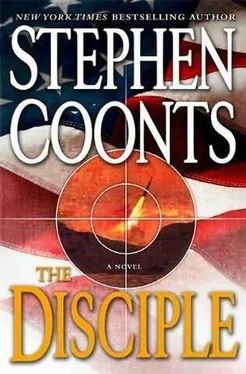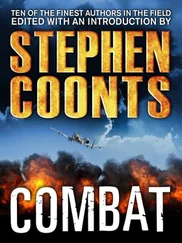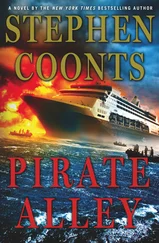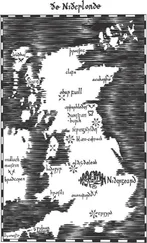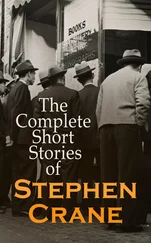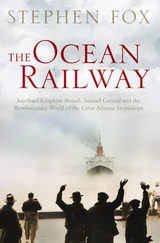Stephen Coonts - The Disciple
Здесь есть возможность читать онлайн «Stephen Coonts - The Disciple» весь текст электронной книги совершенно бесплатно (целиком полную версию без сокращений). В некоторых случаях можно слушать аудио, скачать через торрент в формате fb2 и присутствует краткое содержание. Жанр: Триллер, на английском языке. Описание произведения, (предисловие) а так же отзывы посетителей доступны на портале библиотеки ЛибКат.
- Название:The Disciple
- Автор:
- Жанр:
- Год:неизвестен
- ISBN:нет данных
- Рейтинг книги:4 / 5. Голосов: 1
-
Избранное:Добавить в избранное
- Отзывы:
-
Ваша оценка:
- 80
- 1
- 2
- 3
- 4
- 5
The Disciple: краткое содержание, описание и аннотация
Предлагаем к чтению аннотацию, описание, краткое содержание или предисловие (зависит от того, что написал сам автор книги «The Disciple»). Если вы не нашли необходимую информацию о книге — напишите в комментариях, мы постараемся отыскать её.
The Disciple — читать онлайн бесплатно полную книгу (весь текст) целиком
Ниже представлен текст книги, разбитый по страницам. Система сохранения места последней прочитанной страницы, позволяет с удобством читать онлайн бесплатно книгу «The Disciple», без необходимости каждый раз заново искать на чём Вы остановились. Поставьте закладку, и сможете в любой момент перейти на страницу, на которой закончили чтение.
Интервал:
Закладка:
“They just fired that thing from our goddamn target,” Dick Hauer said heatedly over the ICS. “Our fucking target is right down there, right where they launched that thing!”
His positive statement did little to help Rodgers. The INS was worthless, the radar was only usable in an area search mode, and even with the position inputs she was getting via data-link from AWACS, she couldn’t get the system to update her current position. She was doing everything right, she thought, but tonight, in the darkness and turbulence, flying with Mr. Major Asshole, the system had taken a shit.
“Turn toward that spot,” she told her pilot, who dumped the right wing and pulled, which caused the radar picture to go blank for a second or two as the gimbel limits were exceeded. As he was turning, another ballistic missile came up out of the gloom, following the first into the heavens.
“I’m going to fly over those shitheads and dump the load, armed,” Hauer said. As good as his word, within twenty seconds, all his bombs were on their way.
Even as the bombs were falling, he keyed the radio and reported the two ballistic missile launches to the AWACS, who already knew about them from sensor data and had yet to give him the word.
Cussing silently to himself, Hauer turned the Strike Eagle westward. “Think you can find our goddamn base?” he asked his WSO, who didn’t reply.
Behind him in the darkness the bombs exploded on a hillside about a mile from Tunnel November, injuring no one, hurting nothing.
The F-15 was fifteen miles away heading west when the first of the Tomahawks fired at November exploded right in front of the tunnel, killing the launch crew and destroying the empty missile launchers. Within three minutes, three more Tomahawks arrived to flail the area with blast and shrapnel.
Approaching the Iranian border, the missile launch light began flashing on the instrument panel in front of Hauer, and an audible warning assaulted their eardrums. According to the threat indicator, the missile was coming from the left. Hauer jammed the left wing down and turned hard toward it as he manually pumped off chaff, just in case the automatic system was malfunctioning.
In the soupy darkness, the missile’s exhaust plume was starkly visible as it rose toward them.
“What the fuck happened to the ALQ-199?” Hauer demanded of Rodgers, who didn’t have time to answer before the missile hit.
Neither crew member managed to eject from the out-of-control, flaming plane as it plummeted from the sky.
The Iranians had scored their first kill of the night.
Aboard United States , the incoming Yakhont missiles were not picked up by the carrier’s surface search radar. Nor did Columbia see the three aimed at her.
One of the Super Aegis cruisers four miles north of United States , USS Hue City , picked up the incoming missiles on its radar, and the tactical action officer rippled off a salvo of four SM-2 missiles, hoping they would connect with something. But the Yakhonts were too low and traveling too fast-over fourteen hundred knots-and all but one of the Standard missiles failed to find its target. That Standard struck its Yakhont a glancing blow and failed to explode; still, the forces of impact were so great both missiles disintegrated.
USS Hue City failed to get a firing solution on any of the three incoming Yakhonts. They were too low and too fast, and their flight path was too erratic.
Aboard United States , Admiral Bryant watched the computer symbols that depicted the incoming ship-killers with a growing sense of horror. He knew these symbols were merely computer estimates of the Yakhonts’ position because none of the radar systems airborne or shipboard had managed to get a sustained lock. The computer derived a theoretical position, course, speed and time to impact based on very fragmentary data.
Twelve seconds, eleven… the missiles were traveling at 2,341 feet per second, moving a statute mile in a little over two seconds. Bryant fumbled for the microphone on the wall and pushed the button for the ship’s loudspeaker system. “Incoming missiles,” he roared, “forward, aft, amidships! Brace for shock.”
He felt the two port-side Phalanx Gatling guns open fire. Those 20 mm weapons were directed by their own radar and internal computer, which aimed and fired them automatically whenever the system detected an incoming target. Each gun vomited out three thousand depleted uranium bullets a minute, a river of heavy metal. They made the deck vibrate at a high frequency, so inside the ship they were felt rather than heard. Bryant’s heart threatened to leap from his chest. Maybe, just maybe…
Then a missile hit. In the flag spaces, Bryant felt a dull thud. The Yakhont arrived at an eighty-degree angle from the bow and hit United States fifty feet above the waterline, below the flight deck, almost exactly amidships. It punched through the steel side of the ship and buried itself deep in the aluminum bulkheads under the flight deck, almost reaching the Number Two Elevator, before it detonated. The explosion blew a hole in the flight deck and blasted a cavern in the offices, bunkrooms and passageways. It also blew a hole in the ceiling of the hangar deck. The blast wrecked two planes on the flight deck, blowing one thirty feet into another plane and collapsing its gear, and smashed three on the hangar deck. And it ignited a thousand square feet of aluminum within the ship. Bodies and body parts were quickly consumed by the flames.
Columbia ’s Phalanxes knocked down one of the incoming missiles. The first one to hit crossed above the flight deck too fast for a human eye to follow and smashed into the island superstructure, doing catastrophic damage and killing over fifty men outright. The other went through the opening for Number Four elevator, crossed the hangar deck and blew a hole in the starboard side of the ship. The explosions of both warheads started fierce fires.
Columbia ’s bridge was shattered; half the men there were dead or disabled, and the helmsman lost control of the rudders. The massive carrier began a gentle turn to port. She did a complete 180-degree turn, almost colliding with a destroyer, before Damage Control Central managed to get the helm shifted and regain control of the rudders from the after steering room. Fortunately, aboard both ships, the propulsion systems were still intact and functioning flawlessly. The nuclear reactors, also sited below the waterlines, were also undamaged.
Like the well-trained professionals they were, the crews of the giant ships responded immediately to the disasters. On the flight decks, men began moving aircraft forward to escape the fires while other men flaked out fire hoses. Flames, poisonous fumes and severe battle damage to all systems near the blast sites wreaked havoc with ships crammed with explosive ordnance and jet fuel. The battles to save the carriers would last almost twelve hours before the fires were brought under control.
Chicago O’Hare had fired her last Sidewinder and had declared to her flight leader, who was at least forty miles away, that she was Winchester and Bingo fuel. She had to head back to her tanker rendezvous now or she was going to be swimming home. Fortunately the sky seemed empty of cruise missiles. She stuck her hand up under her oxygen mask and wiped the perspiration from her face. Then she wiped her eyes and eyebrows. Her flight suit and underwear were soaked with sweat.
Holy mother!
The E-2 controller came up on the radio. “Ninety-nine Battlestar aircraft, ninety-nine Battlestar aircraft, divert to Qatar.” Ninety-nine was the jargon for all, and Battlestar was the call sign of United States .
O’Hare laid her plane into a lazy turn in the general direction of Qatar and worked on her nav computer while she climbed. Oh, joy, Al Udeid Air Base at Doha was only 110 nautical miles away. She had plenty of fuel for that little jaunt. She looked up the frequency for Al Udeid Approach on her Bingo cards and dialed it into the ready position on her radio.
Читать дальшеИнтервал:
Закладка:
Похожие книги на «The Disciple»
Представляем Вашему вниманию похожие книги на «The Disciple» списком для выбора. Мы отобрали схожую по названию и смыслу литературу в надежде предоставить читателям больше вариантов отыскать новые, интересные, ещё непрочитанные произведения.
Обсуждение, отзывы о книге «The Disciple» и просто собственные мнения читателей. Оставьте ваши комментарии, напишите, что Вы думаете о произведении, его смысле или главных героях. Укажите что конкретно понравилось, а что нет, и почему Вы так считаете.
